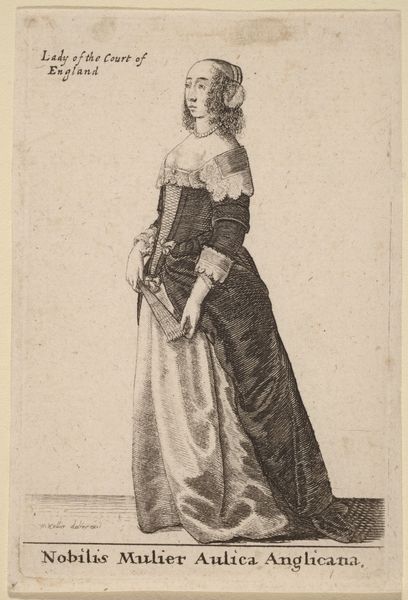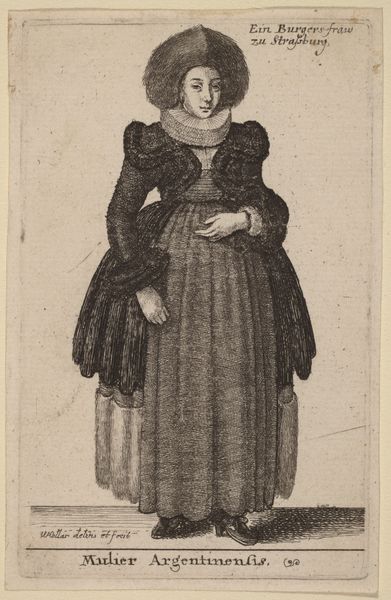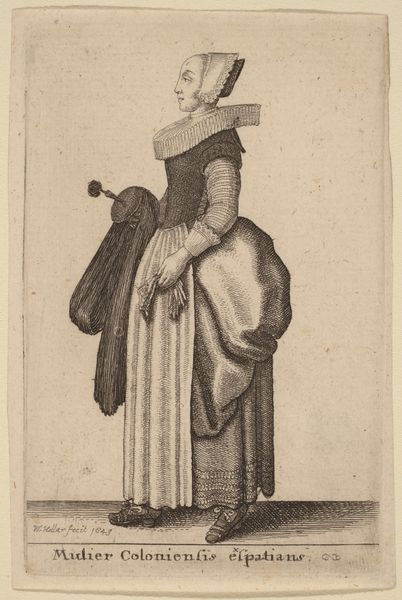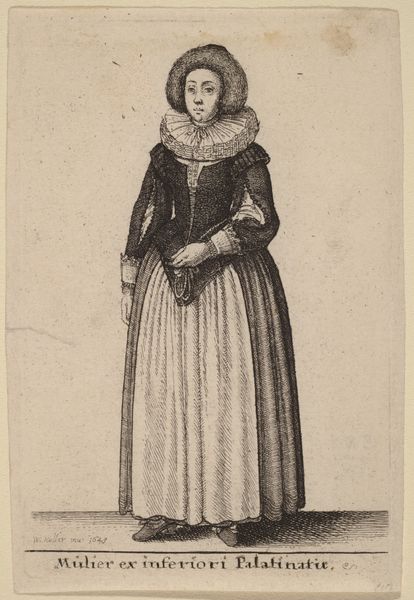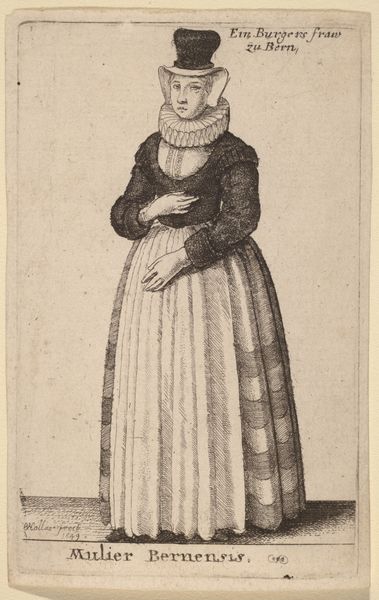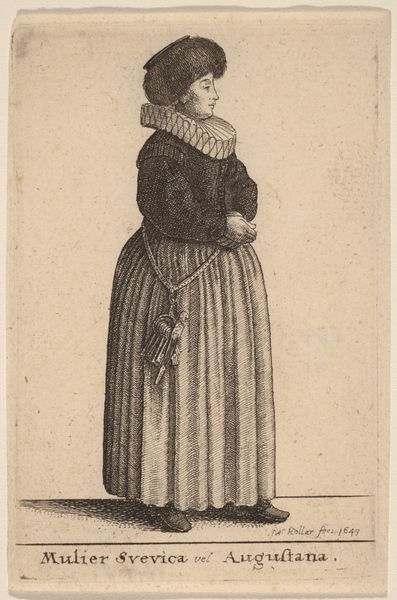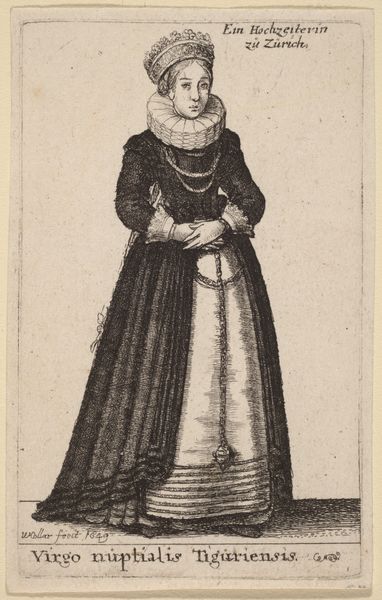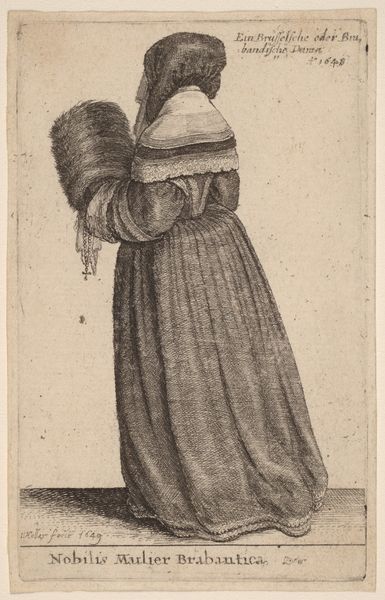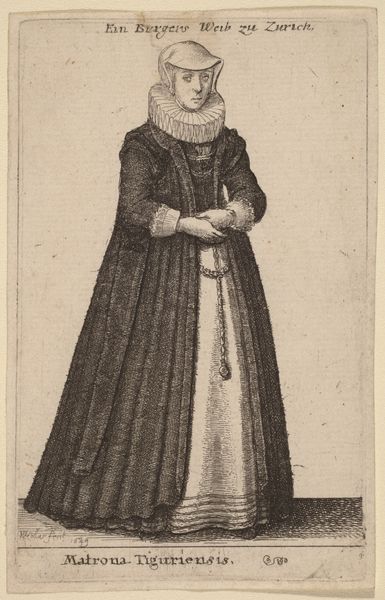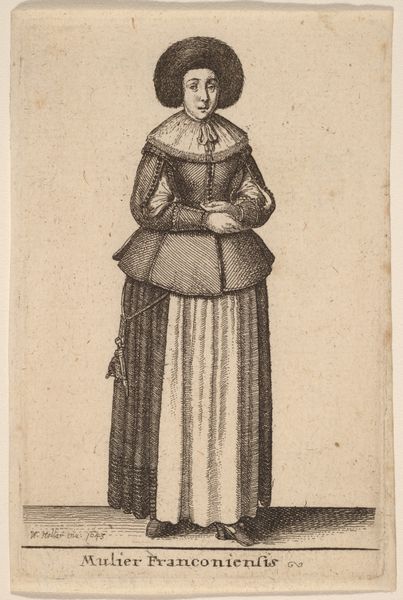
print, engraving
#
portrait
#
baroque
# print
#
figuration
#
line
#
portrait drawing
#
history-painting
#
engraving
Copyright: National Gallery of Art: CC0 1.0
Curator: Oh, there's a subtle coolness to this piece, wouldn't you say? It's an engraving, "Mercatoris Parisiensis Vxor," created back in 1643 by Wenceslaus Hollar. The detail in the folds of the fabric, the way she holds herself... Editor: Yes, an air of poised austerity certainly resonates. Looking at this portrait, I see far more than a mere representation of a Parisian merchant’s wife; I perceive a reflection of Baroque society's complex stratification and gender roles. Curator: Right? I'm fascinated by the way Hollar uses these precise lines. I almost feel I can touch the stiff collar and the weight of that impressive skirt. It’s almost tactile, isn’t it? Like she is here in front of us. I can sense that woman, if you know what I mean. Editor: Indeed. The emphasis on the material—the clothes, specifically—speaks volumes. The sumptous details served as explicit markers of social standing. How power and wealth are materially embodied and performed within 17th century European culture. This meticulous detail also exposes gender as a construct. Curator: But there's something more personal here too. The way she gazes, almost confrontational. There’s strength, a little melancholia, a secret kept under all the heavy fabric. Do you feel it? It is her eyes that draw me to the artwork again and again. Editor: Precisely. Her controlled demeanor masks a vulnerability endemic to the patriarchal structures of that period. Her identity is literally inscribed through the name of her husband in the artwork's title. How much is it hers? And what has she had to forsake? It is really impossible to look at the artworks through innocent eyes. Curator: True. So much unseen in plain sight. Looking closely feels almost like unearthing forgotten stories... I think it gives a strange vibration... and how does it interact with ours. Thank you, really, this painting has more inside than outside. Editor: My pleasure! Art provides spaces to recognize structural norms of a certain moment. And this exercise can transform the way we apprehend our present and possible futures. Thank you.
Comments
No comments
Be the first to comment and join the conversation on the ultimate creative platform.
